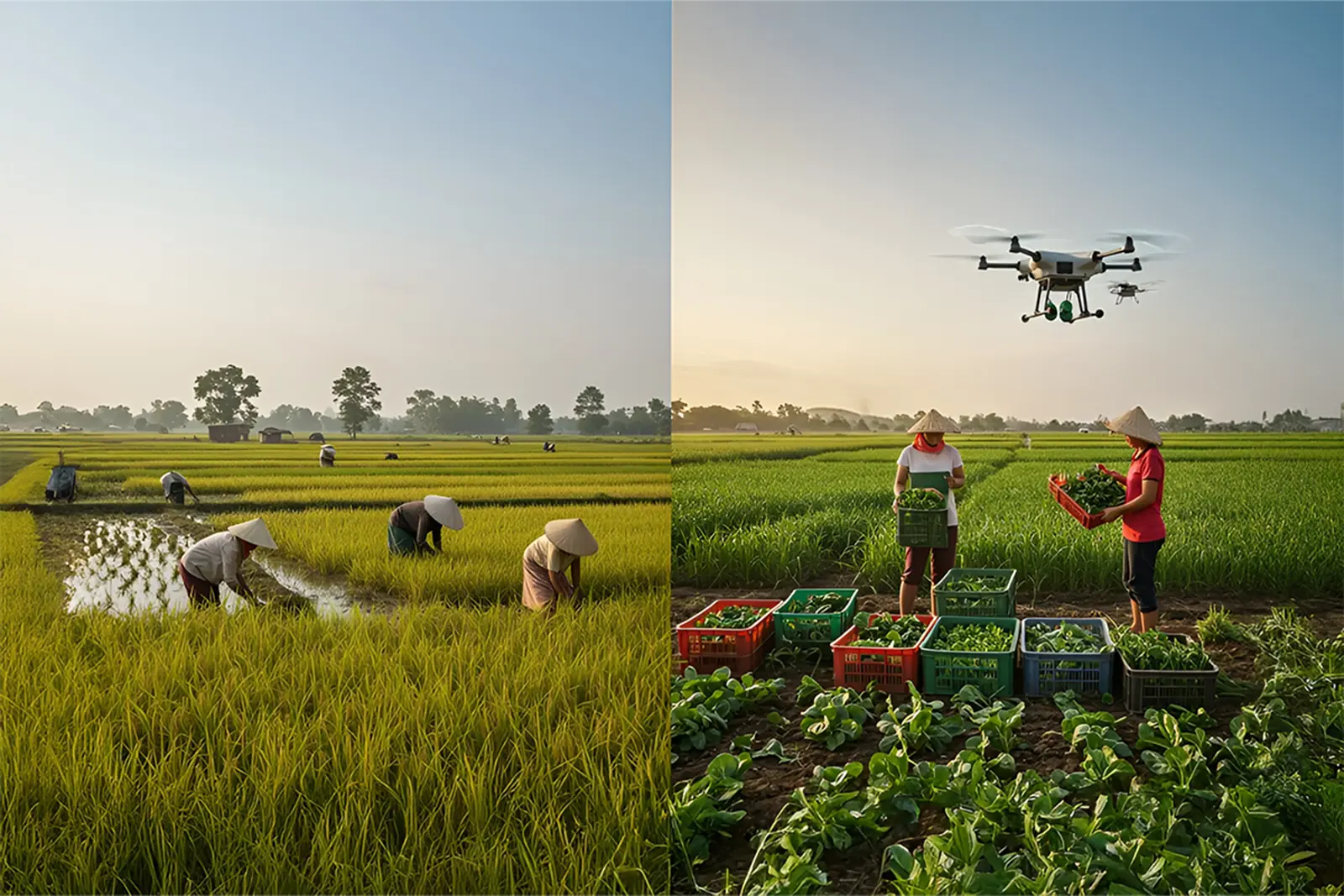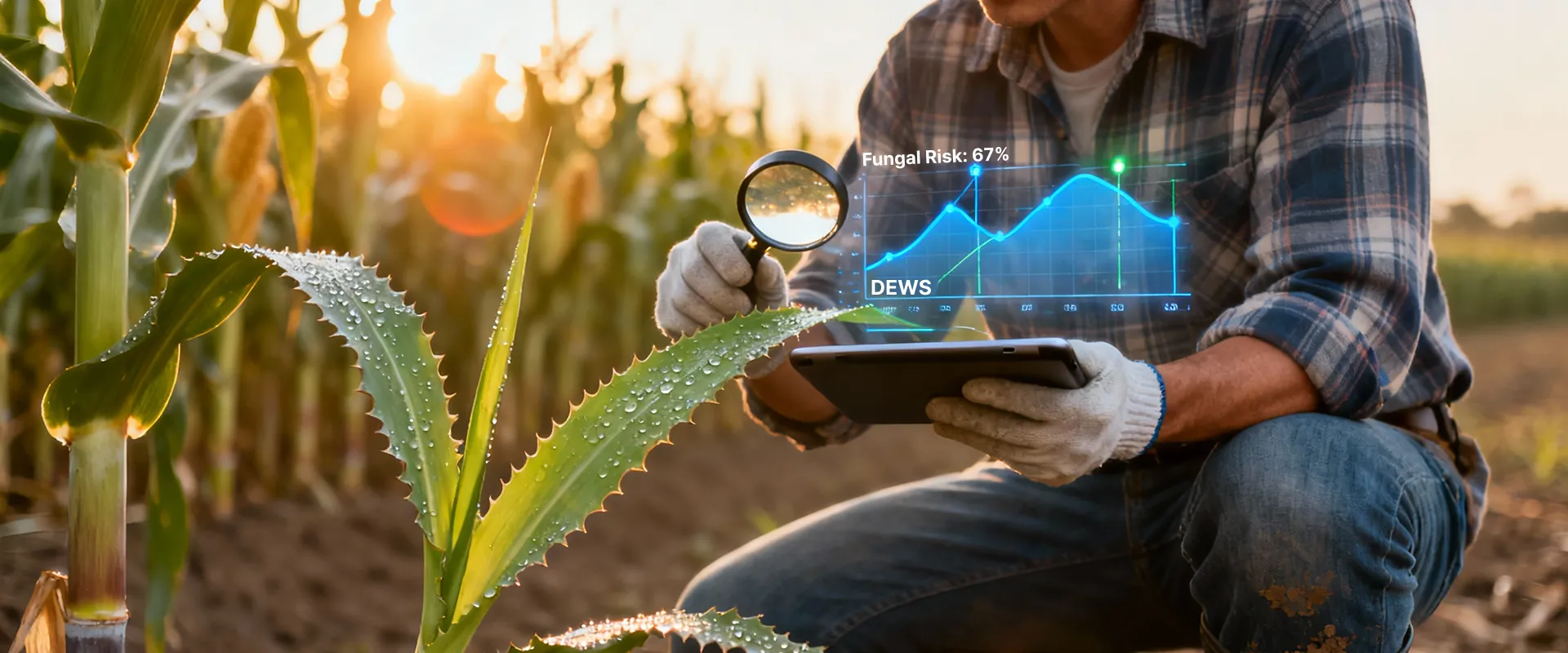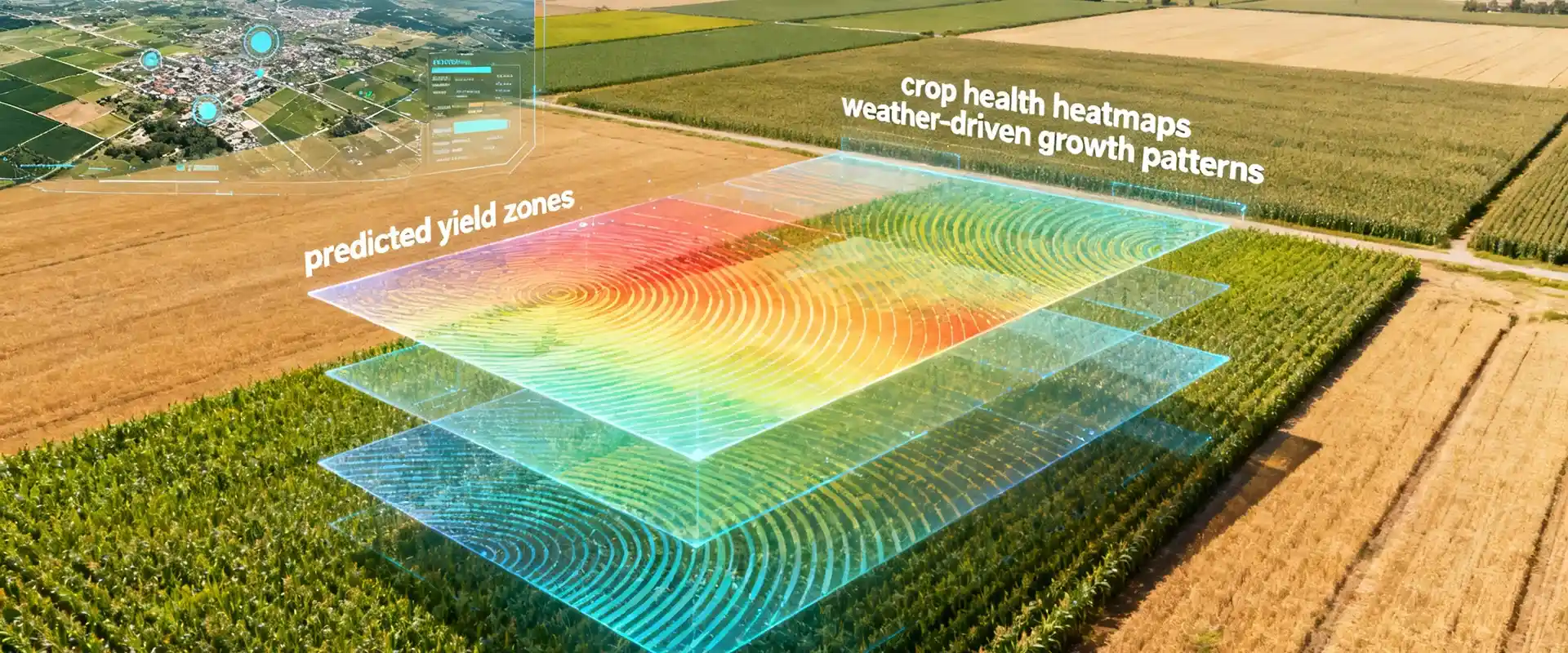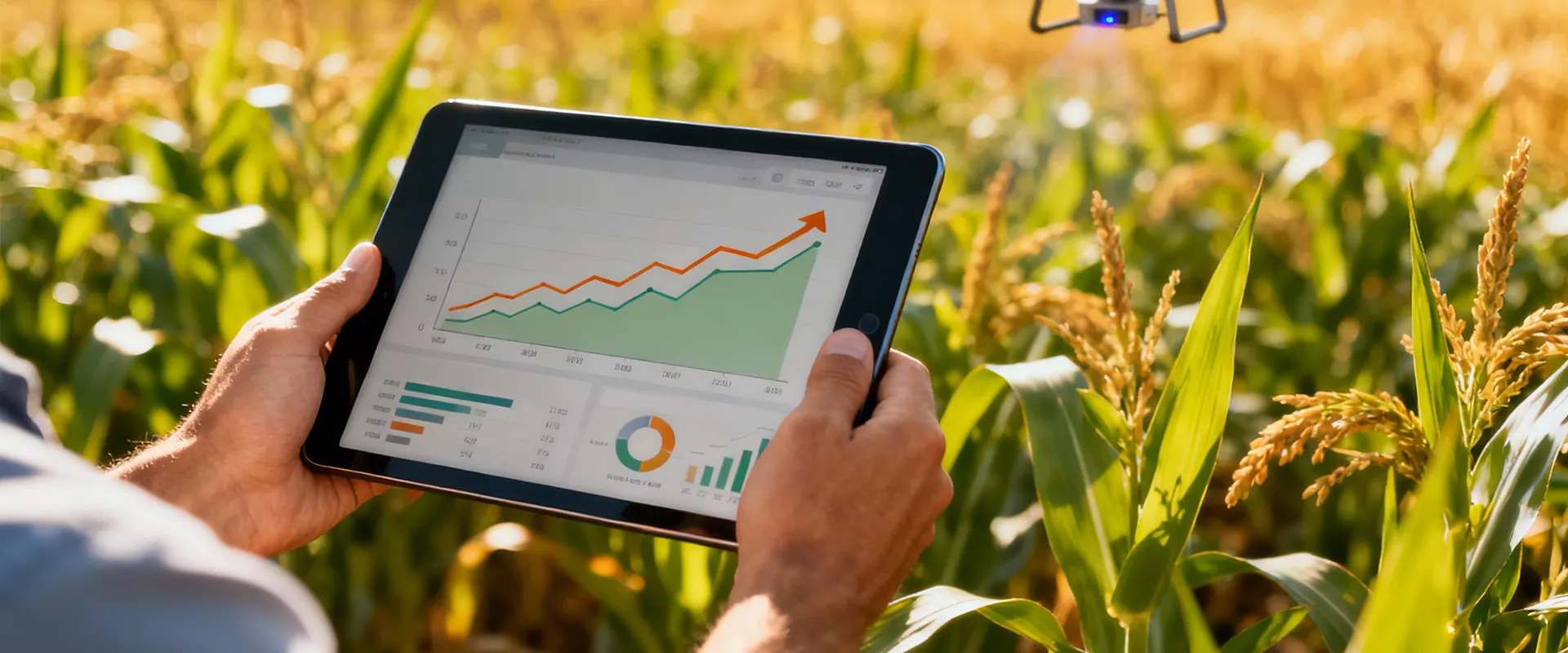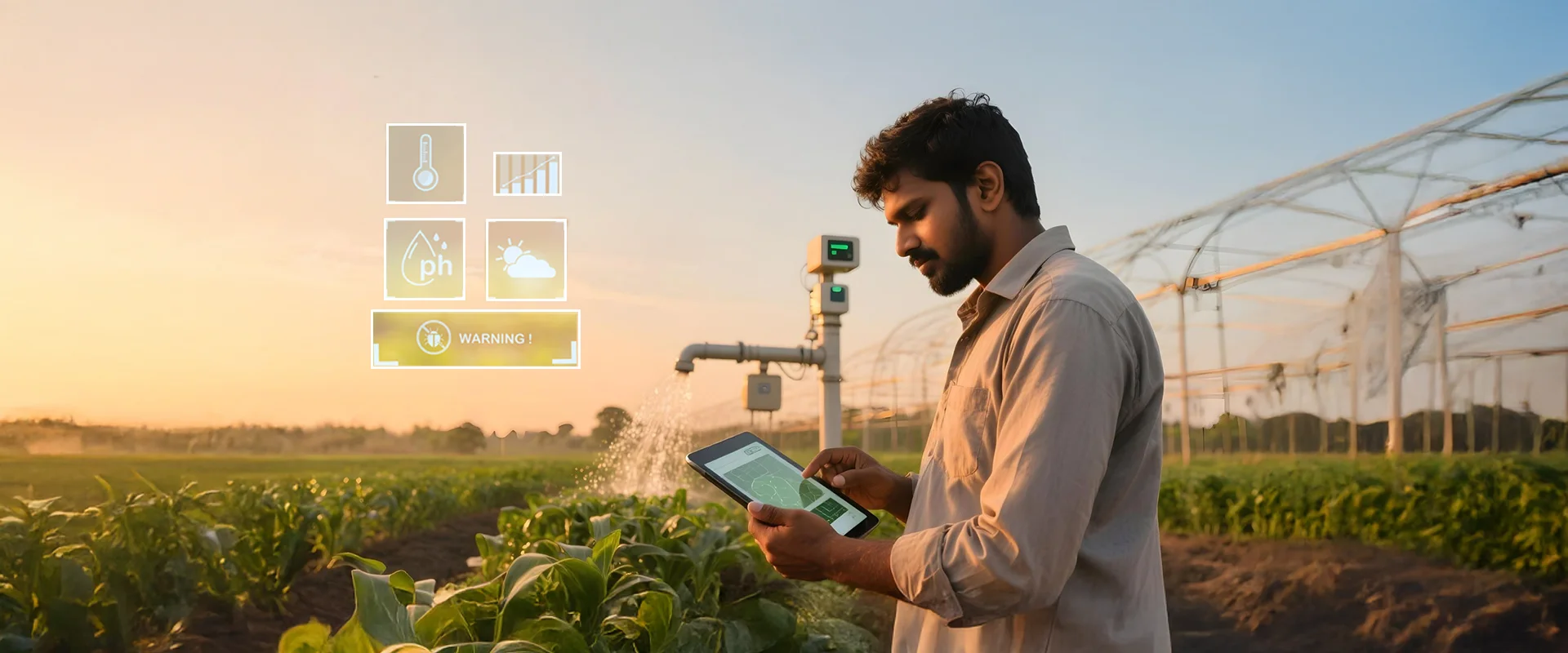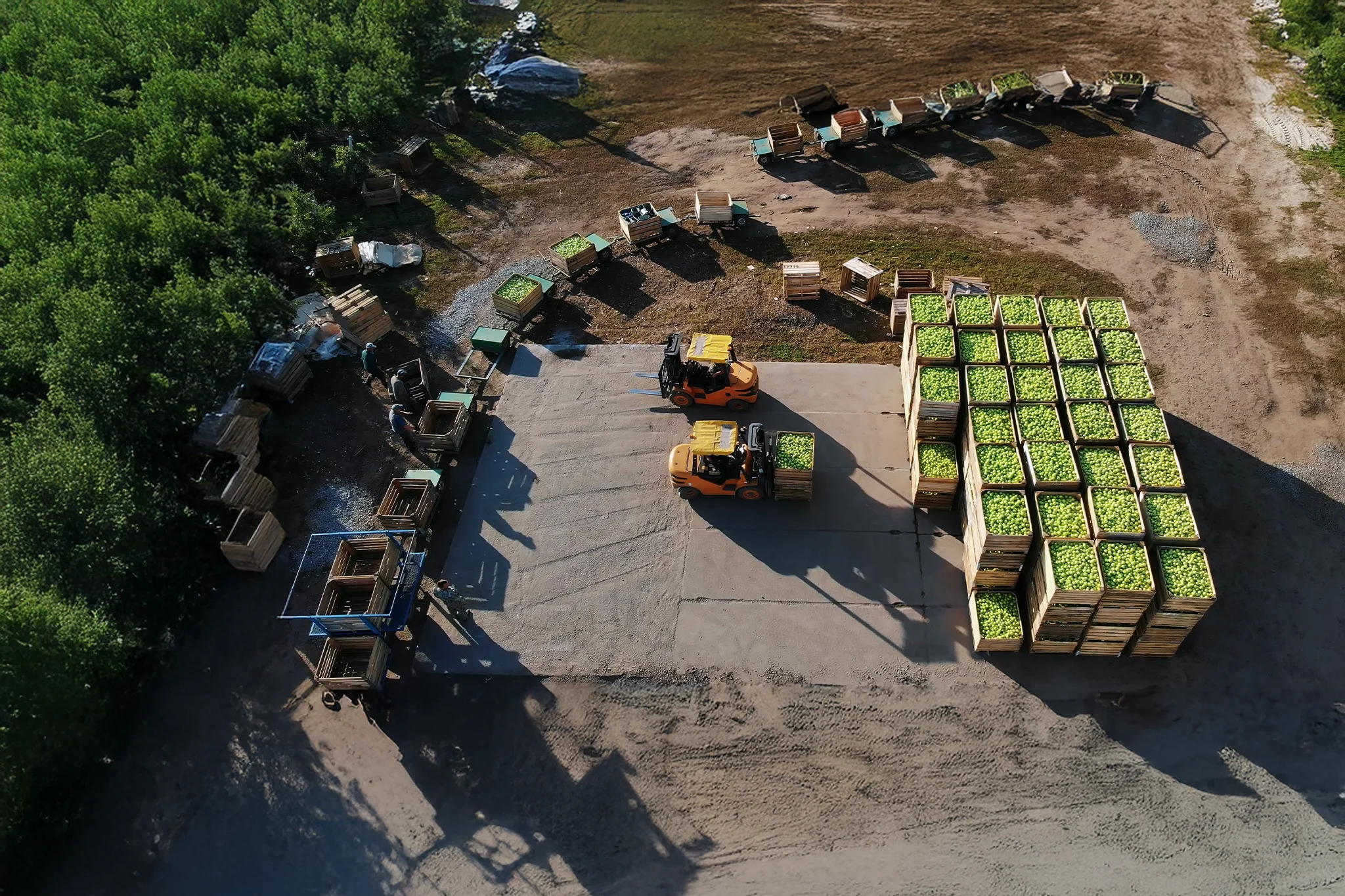The progressive decline of arable land due to growing urbanization is a major hurdle to smallholder farmers and the Agri-industry. Accompanying challenges include feeding a growing population, providing livelihoods to farmers, and protecting the environment.
To support marginal farmers, enhance food security, reduce poverty, and tackle climate change, we must understand the dynamics involved in agricultural production. Agriculture is influenced by numerous factors – some being technological, such as data-driven agricultural practices, management, and decision-making; others being biological such as diseases, insects, pests, and weeds; and environmental, like topography, soil fertility, water quality, and climatic conditions.
Major operational efficiency issues plaguing agriculture
Agricultural holdings are mostly individual businesses predominantly managed by smallholder farmers
The agricultural operations of a smallholder farmer are family-run, and all the family members contribute to the labor. A major challenge facing smallholder farmers is low productivity. They struggle due to the lack of knowledge about increasing productivity using innovative technologies. Many marginal farmers are poor and unable to afford the goods and services needed to improve operational efficiency of their small-scale farming activity, which makes it important to educate them and provide required financing to adopt smart farming practices.
Lack of technological access to smallholder farmers
Feeding a growing population while adhering to Climate Smart Agriculture (CSA) norms
The United Nations (UN) expects the world population to reach 9.7 billion in 2050, which would require an increase of about 70% in food production to feed the growing numbers. Agriculture’s vulnerability to climate change can aggravate food insecurity caused by overpopulation. Climate-smart agriculture practices that focus on sustainable and efficient use of resources help to increase agricultural productivity and ensure that the world meets the goals of food security as envisaged by the UN.
Ensure predictable yield and good quality of produce, to provide a stable and secure livelihood for farmers
Volatility of food prices mandates improved crop resilience and yield protection
Along with economic growth, global populations have had to tackle the twin concerns of inflation and increasing food prices. In regions affected by drought and famine, inflation and price rise result in increased food shortages and hunger. This increases the burden on farmers already impacted by the disruptions caused by climate change.
Protecting the environment
Agriculture and the environment are closely linked and significantly impact each other. Many modifications and techniques used in farming to boost yields negatively impact the environment and sustainability. Degradation of soil and water quality, acceleration of soil erosion, and contamination of groundwater, poor water management are some ill-effects of the excess use of agrochemicals. Sustainable and climate-smart agriculture practices can increase output on existing farmland without negatively impacting the environment.
Coping with climate change
Transboundary pests and diseases
Climate change and changes in land cover, such as desertification and deforestation, can increase the vulnerability of humans, plants, and animals to pests and diseases. Changes in atmospheric gases, temperature, and humidity levels can alter interactions between pests and their hosts and natural enemies. It can also help insect and plant vectors to travel beyond their geographic range into new regions. The use of innovative technologies can help farmers understand these changes through timely alerts for better management of pests and diseases.
Rise in demand for quantity and quality of food
The need to curtail food wastage
Lack of data sources on/off the field
Need for optimum use of agrochemicals
Agrochemicals improve crop health, but their overuse harms the environment by altering the pH value of the soil. It kills beneficial organisms, increases the nitrate content and toxicity, pollutes air and water, and causes algae to bloom in water sources, which threatens aquatic life. If agrochemicals enter food chains, they can cause various health problems in humans and animals. Judicious use, replacement with biopesticides and biofertilizers, and regulatory policies for management and use are some control measures for the optimum and safe use of agrochemicals.
Need for an intelligent agriculture cloud
One of the solutions that enable agriculture transformation is Cropin Cloud. It is the world’s very first purpose-built industry cloud platform for agriculture. Cropin’s Intelligent Agriculture Cloud is a simple, easy-to-deploy platform that bridges communication and information gaps between stakeholders across the agricultural ecosystem.
Cropin Cloud integrates multiple solutions:
- Applications for digitization
- Data pipelines for enhancing analytics
- Automating alerts relating to seed health and weather forecasts at the touch of a button
Cropin Cloud delivers unprecedented collective capabilities to every stakeholder in the agriculture ecosystem to accelerate digital transformation. Food processing companies can digitize farm operations and achieve traceability in agriculture with Cropin Cloud. Village-level intelligence gained from micro and macro data using cloud can help farming, seed companies, Agri-input manufacturers, and food processors with accurate yield prediction and monitoring to re-adjust supply against demand.
Farm equipment and other agri-input manufacturers can gain from mechanization data on farming resources to sense and meet demands. Information from Internet of Things (IoT) and remote sensing devices such as drones and satellites can provide farmers and financial institutions with capabilities to monitor farmland, Agri-input usage, weather, and crops to assess the viability of loans and facilitate access to finance.
Cropin Cloud can assess data to assist governments in formulating policies that can improve smallholder farmer livelihoods and address food security. Farmer engagement through farm management apps and the availability of reliable real-time information can help implement climate-smart agricultural practices that can protect the environment and biodiversity.

